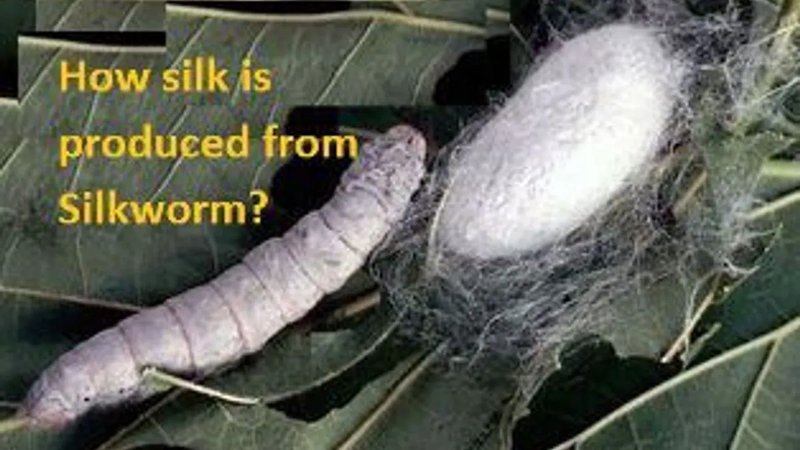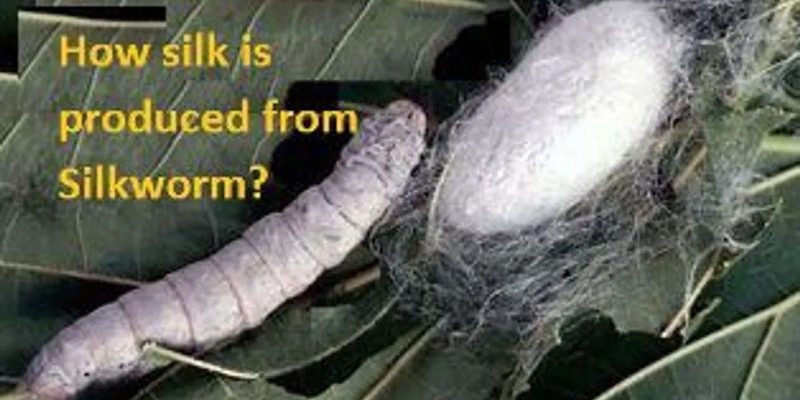
Silkworm silk is produced by the larvae of the silk moth, *Bombyx mori*. Traditionally, the extraction process involved killing the moths to harvest the cocoons. However, with increasing awareness of animal welfare, new methods have emerged. Today, we can obtain silk without harming these tiny creatures. Let’s dive into how this is done and explore the steps involved in this amazing transformation from worm to silk.
The Life Cycle of the Silkworm
Understanding how silk is made starts with the silkworm’s life cycle. Silkworms go through several stages: egg, larva (caterpillar), pupa, and then adult moth. Each stage is crucial, especially the larva, which is the primary silk-producing phase.
1. **Egg Stage**: The female moth lays hundreds of tiny eggs. After a few days, these eggs hatch into larvae.
2. **Larva Stage**: The caterpillars, or silkworms, are ravenous eaters, consuming mulberry leaves almost non-stop. This phase lasts about 4-6 weeks, during which they grow considerably.
3. **Pupa Stage**: Once fully grown, the silkworm begins to spin a protective cocoon around itself, using a long strand of silk. This silk can be hundreds of meters long!
4. **Moth Stage**: After about two weeks inside the cocoon, the moth emerges.
This life cycle is essential to silk production, so understanding it helps us appreciate the methods used to extract silk sustainably.
Traditional Silk Extraction Methods
Historically, silk extraction was a rather harsh process. Once the silkworms spun their cocoons, they were boiled alive to kill them and preserve the silk fibers. This method, while effective for harvesting silk, raised significant ethical concerns.
– **Boiling**: The cocoons are boiled to separate the silk fibers.
– **Killing the Moth**: This process destroys the pupa inside the cocoon, which is a major downside for those concerned about animal welfare.
While this method produces beautiful silk, many people are turning away from this practice due to the ethical implications. Thankfully, there are alternatives emerging that focus on humane silk extraction.
Sustainable Silk Extraction Techniques
With a shift towards animal welfare, several sustainable silk extraction techniques have gained popularity. These methods allow us to collect silk while ensuring the moths can live their full lives. Here are a couple of innovative approaches:
1. **Ahimsa Silk**: Also known as “peace silk,” this method involves allowing the silkworms to emerge from their cocoons before harvesting silk. The larvae spin their silk and then transform into beautiful moths. Once they have completed their life cycle, the empty cocoons are collected, and silk is harvested.
2. **Sericulture**: This practice focuses on breeding silkworms in controlled environments. Farmers can selectively breed silkworms for their silk quality while ensuring humane treatment. It’s a win-win for both the silkworms and silk producers.
These sustainable methods are gaining traction, with consumers increasingly seeking ethical options. Honestly, it’s a relief to know that beautiful silk doesn’t have to come at such a high cost to the creatures producing it.
Step-by-Step Process of Silk Extraction Without Harm
Curious about how the extraction process works without harming these little creatures? Here’s a simple breakdown of the steps involved in obtaining silk without sacrificing silkworms:
1. **Breeding**: First, silk farmers breed silkworms in a controlled environment. They monitor temperature and humidity to ensure optimal growth.
2. **Feeding**: The larvae are fed mulberry leaves until they reach maturity. This stage can take about 30 to 45 days.
3. **Cocoon Spinning**: Once they’re ready, the silkworms spin their cocoons. Here’s where the magic happens—their silk fibers are secreted from glands in their mouths and are used to create their protective case.
4. **Emerging Moths**: After about two weeks, the adult moths emerge from the cocoons. Allowing this process to complete means they can live their full potential as moths.
5. **Cocoon Collection**: Once the moths have emerged, farmers collect the empty cocoons and process them into silk.
By following these steps, we can enjoy beautiful silk fabrics without the ethical concerns of traditional methods.
The Benefits of Ethical Silk Production
Choosing ethical silk production has several benefits that go beyond just being kind to silkworms.
– **Biodiversity**: Sustainable practices help maintain biodiversity. Healthy silkworm populations contribute to ecological stability.
– **Quality**: Ethical silk often comes from more careful farming practices, resulting in higher-quality fibers.
– **Consumer Demand**: As more people seek out sustainable options, farmers who adopt humane practices can meet this demand, promoting better animal welfare and environmental sustainability.
These benefits show that ethical silk production is not just a trend, but a necessary step towards responsible consumption.
Silk production doesn’t have to come at the expense of silkworms. By understanding their life cycle and adopting sustainable extraction methods, we can enjoy luxurious silk fabrics while respecting the lives of these unique creatures. The shift toward ethical silk, like Ahimsa silk and sericulture, is setting a new standard in the textile industry that we should all support.
So, the next time you wear something silky, you can feel good knowing it was made with compassion. Supporting ethical practices is not just a choice; it’s a statement about our values and the kind of world we want to create. Let’s keep those little moths in mind as we wrap ourselves in elegance!

